Key takeaways:
- Iterative development emphasizes gradual enhancements and adaptability, allowing teams to respond quickly to user feedback and unexpected challenges.
- Key principles include incremental improvements, continuous feedback loops, and regular testing and validation to refine the product early in the process.
- Implementing iterative development requires clear objectives, collaborative tools, and celebrating small victories to maintain team motivation and focus.
- Challenges such as scope creep, the need for consistent communication, and tight deadlines can complicate the iterative process, necessitating careful management.
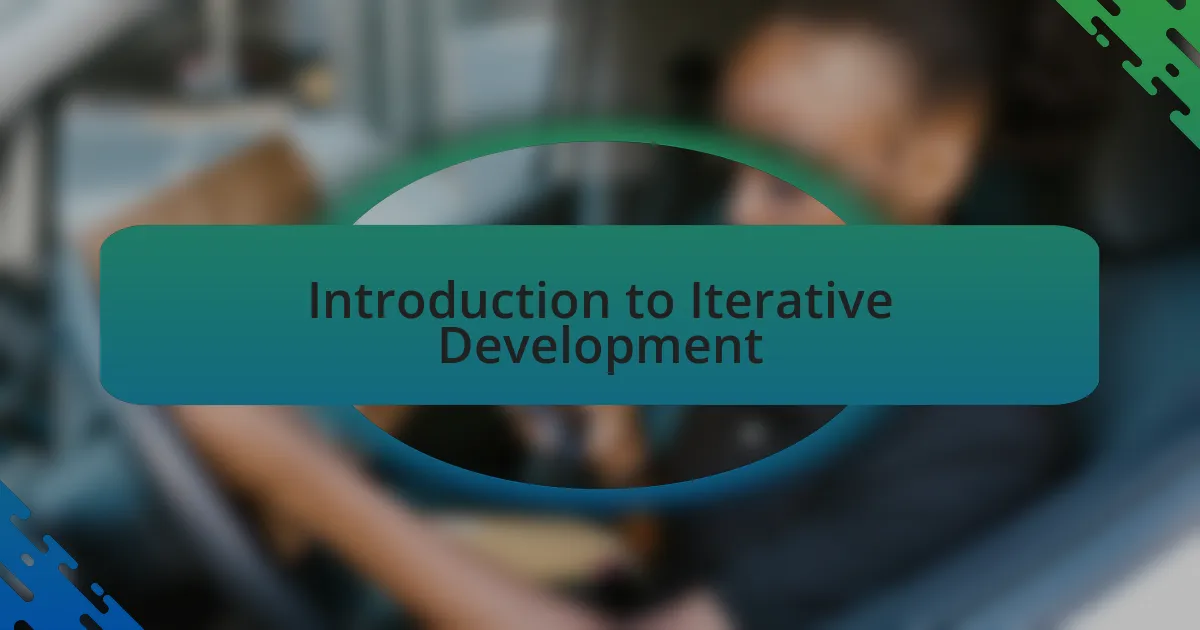
Introduction to Iterative Development
Iterative development is a process I’ve often found to be a game-changer in software projects. Instead of aiming for perfection in a single go, this approach focuses on building a basic version of the product and gradually enhancing it through repeated cycles. Doesn’t that sound like a more flexible way to handle the ever-evolving demands of a project?
One experience that stands out for me was working on a startup’s application, where we released simple features monthly based on user feedback. This not just kept us aligned with user needs, but also allowed us to adapt quickly to changes we hadn’t anticipated. Isn’t it fascinating how tweaking just a few elements based on real-world use can lead to significant improvements?
The beauty of iterative development lies in its emphasis on learning and refining. Each cycle presents an opportunity to reflect on what works and what doesn’t, creating a collaborative spirit within the team. Don’t you think that fostering a culture where experimentation is encouraged can lead to innovative solutions?
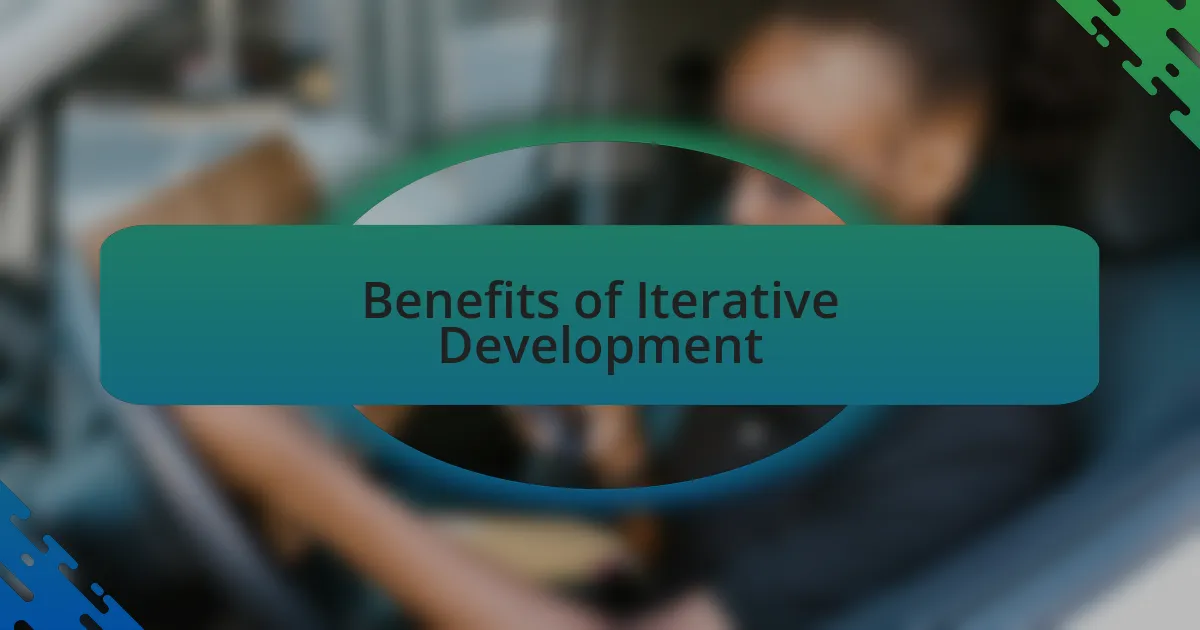
Benefits of Iterative Development
Iterative development brings a level of flexibility that’s hard to achieve in traditional methods. I recall a project where we faced unexpected technical hurdles. By adopting an iterative approach, we were able to pivot our strategy mid-course, testing solutions in real-time. Isn’t it reassuring to know that adjustments can be made as new challenges arise, rather than being stuck with one rigid plan?
Another benefit I’ve experienced is the enhanced collaboration that comes from iterative cycles. My team found that regular feedback loops—from users and among ourselves—created a deeper understanding of the project goals. It felt less like a checklist and more like a conversation. Does this dynamic not energize the team, making everyone feel more invested in the outcome?
Moreover, I’ll never forget the feeling of satisfaction when we rolled out an updated feature based on user suggestions. Each iteration brought us closer to a product that truly resonated with our audience. Doesn’t it make you feel proud to build something that reflects the needs and desires of real users? The iterative process not only yields a better product, but it also strengthens the relationship between the developers and the users.
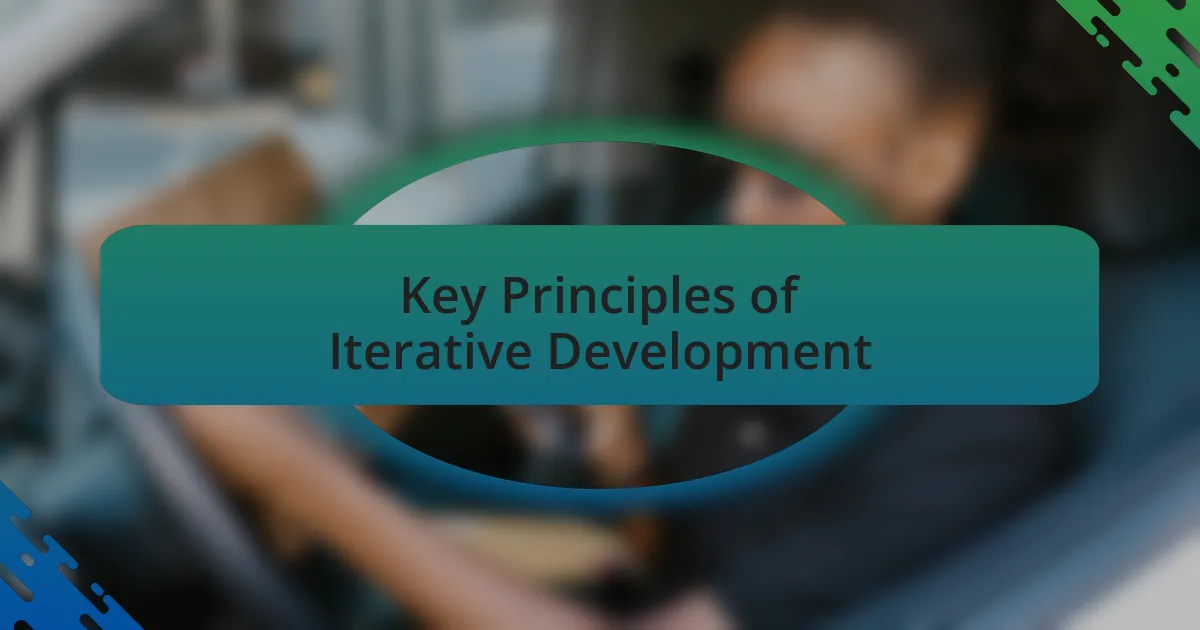
Key Principles of Iterative Development
One of the key principles of iterative development is the focus on incremental improvements. I remember working on a feature where we initially released a bare-bones version to gauge user interaction. By monitoring their feedback closely, we were able to make targeted enhancements in subsequent iterations, which led to a more intuitive design. Isn’t it fascinating how small changes can lead to significant user satisfaction over time?
Another essential aspect is testing and validation. When I encouraged my team to deploy mini-releases for testing, we were pleasantly surprised by the number of insights we gained. Each test transformed our assumptions into factual feedback, allowing us to fine-tune the product much earlier in the process. Doesn’t it make sense to challenge our initial ideas against real user behavior instead of waiting until the end?
Lastly, continuous feedback loops are at the heart of iterative development. Reflecting on a past project, we implemented weekly demos to showcase our progress. This not only kept stakeholders in the loop but also sparked valuable discussions that reshaped our direction. Have you ever noticed how ongoing communication can turn a good idea into a great one? By embracing this principle, we create an environment where innovation thrives.
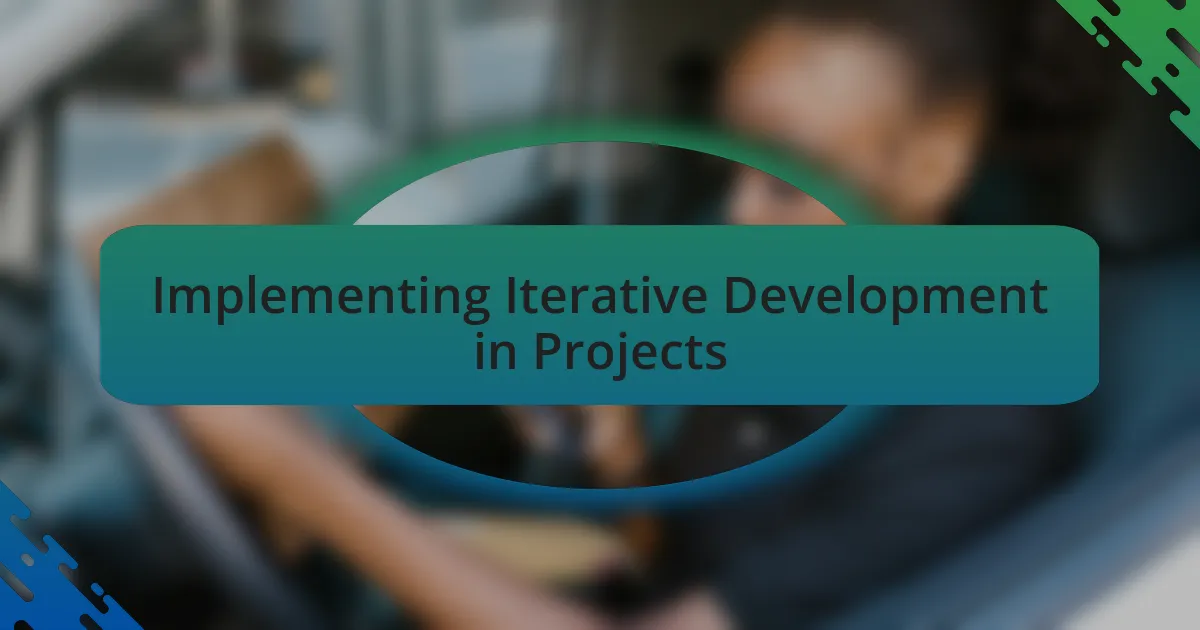
Implementing Iterative Development in Projects
Implementing iterative development in projects begins with setting clear objectives for each iteration. In one project, I vividly remember aligning our goals around user feedback, which kept us focused and motivated. It’s intriguing how having measurable objectives can turn a complex task into manageable milestones, wouldn’t you agree?
Moreover, integrating tools that facilitate collaboration and communication can significantly enhance the iterative process. During a sprint, I used a project management platform that allowed our team to share real-time updates. This not only streamlined our workflow but also built a strong sense of accountability among team members. Isn’t it rewarding when technology helps to foster teamwork?
Finally, it’s essential to celebrate small victories at the end of each iteration. When we completed our initial development cycle, the team took a moment to recognize our accomplishments, despite them being modest. That celebration not only boosted morale but also reinforced our commitment to improvement. Have you ever noticed how acknowledging progress can energize a team for the next phase?
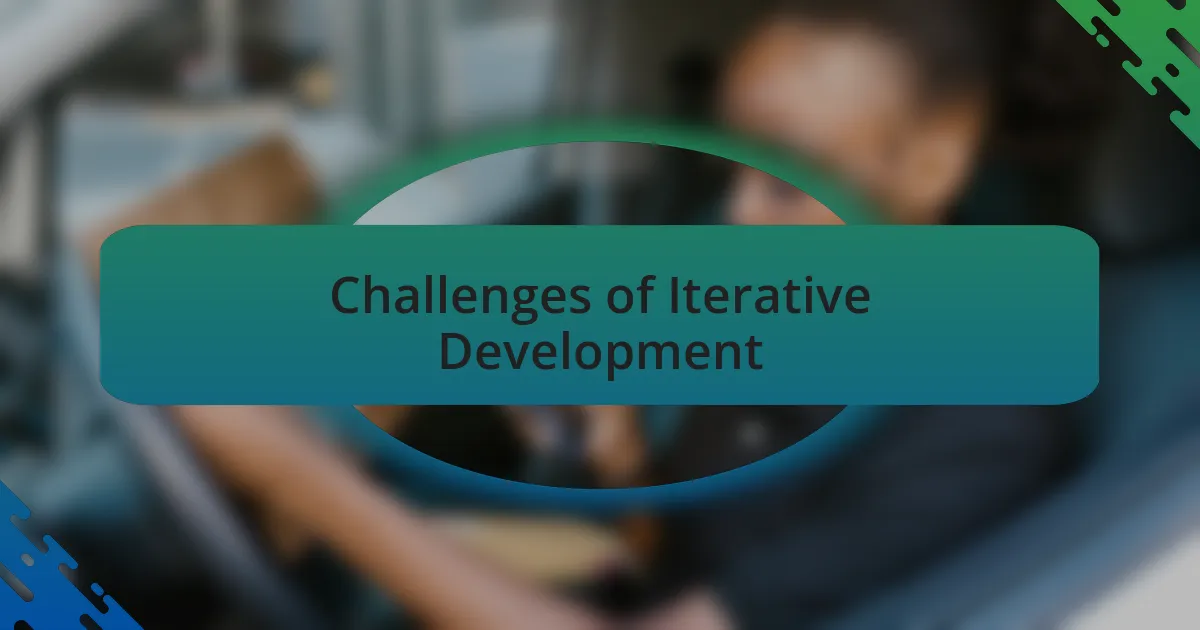
Challenges of Iterative Development
The challenges of iterative development can often catch teams off guard. In my experience, one primary hurdle is managing scope creep—where new features are continuously added to the project. During a project I led, we started with a clear vision, but enthusiasm quickly led us to consider every suggestion. It became a balancing act, trying to prioritize user needs while keeping the project on track. Have you felt that tension between innovation and focus?
Another significant challenge I’ve encountered is the need for consistent communication. As iterations progress, it becomes crucial to ensure everyone is aligned. I remember a situation where a miscommunication about a feature led to wasted effort and frustration. It was a stark reminder that regular check-ins and open dialogue are vital. How can we expect to move forward if we’re not all on the same page?
Lastly, meeting deadlines can feel like a tightrope walk in an iterative environment. While I appreciate the flexibility iterations offer, it can sometimes lead to a relentless cycle of constant re-evaluation. On one project, a delay in feedback from stakeholders pushed our timeline back, and I felt the pressure as the launch date loomed closer. Have you ever found yourself racing against time while trying to incorporate last-minute changes?
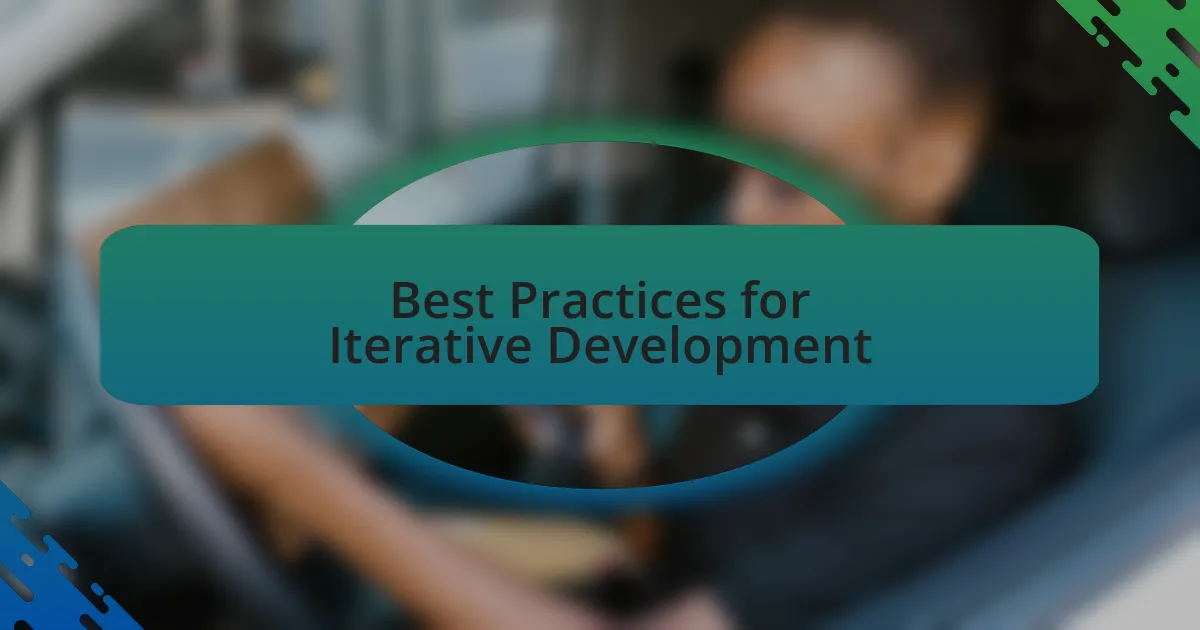
Best Practices for Iterative Development
When it comes to best practices for iterative development, prioritizing user feedback is key. In one project I worked on, we set up regular feedback sessions with our end-users. These gatherings were enlightening; they not only shaped our features but often revealed needs we hadn’t anticipated. How often do you involve users in your development process?
Another practice I’ve found invaluable is maintaining a flexible yet structured roadmap. During a previous project, I learned the hard way that rigidity can stifle creativity. We were too focused on our initial iterations, and it prevented us from pivoting when new insights emerged. This experience taught me to embrace change without losing sight of the broader goals. Have you experienced that crucial moment when you needed to adapt your plans?
Lastly, continuous integration and testing are non-negotiable in iterative development. I’ve seen teams struggle because they let testing slide in favor of speed. In my case, adopting automated testing tools allowed us to catch issues early, saving us from significant headaches down the line. How do you ensure quality while keeping up with the demands of iteration?